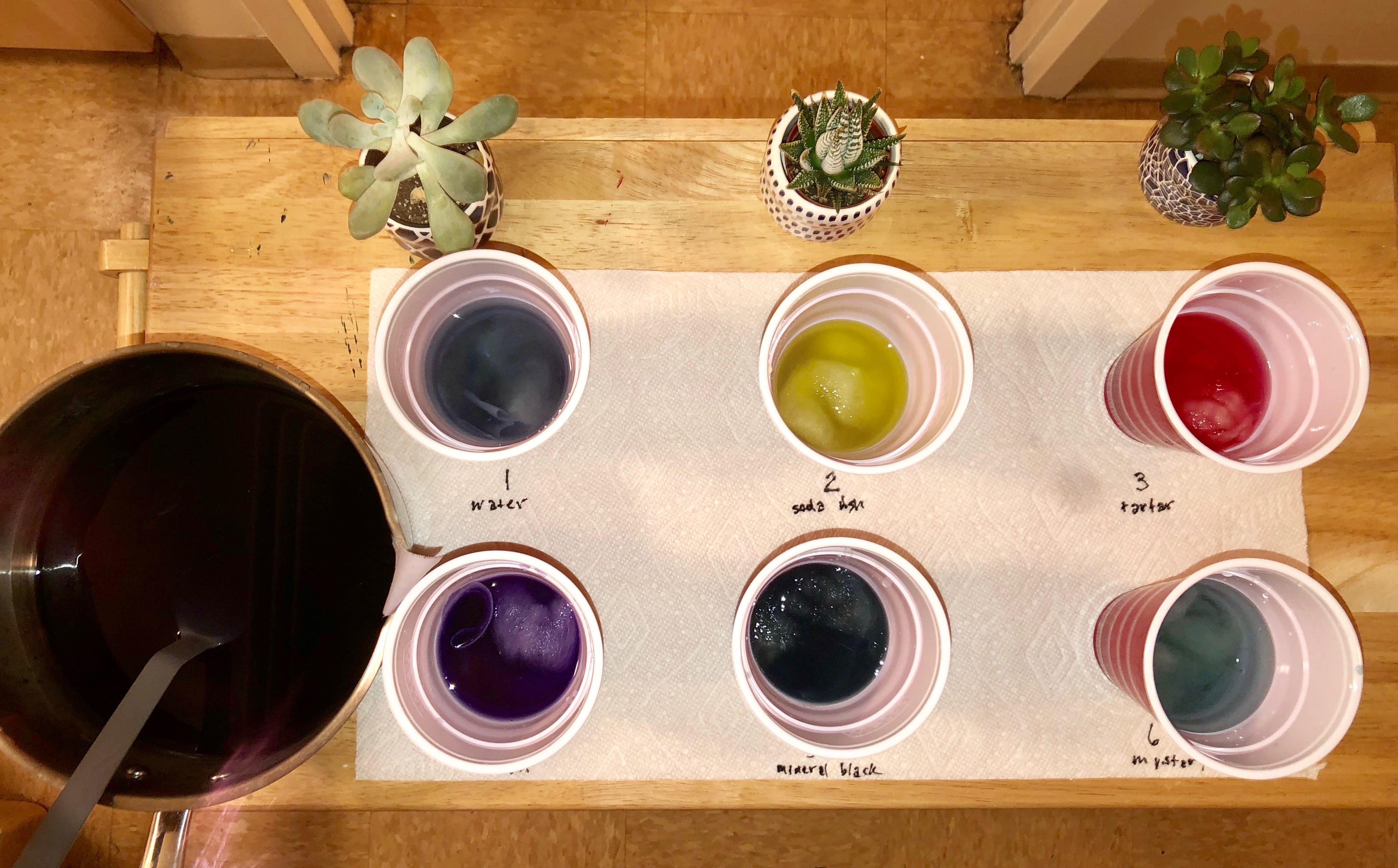5 October, 2018
Natural Dye Process
I chose to experiment with the natural dye from an organically grown cabbage. To grow properly cabbages need watering once a week, applying 1 1/2 inches of water to the soil. Due to cabbages being cool season plants, the cabbage is likely to have flourished locally in the state of New York and only travelled a few miles to reach Whole Foods in the city.
Between the oily and clean wool samples the color differentiated in tone and saturation. The oily wool retained less of the dye, therefore the saturation was less than that of the clean wool. In addition, the tone of the dye within the oily wool was darker than that of the clean wool.
After experimenting with natural dyes on wool and cotton, I hypothesize that if I were to repeat a similar experiment on synthetic or polyester fabric thean the natural dye will not retain as well. Due to the silky texture and tight weaving of those fabrics the dye would have no space to permanently settle.
I am very satisfied with the outcome of the experiment, however, if I were to set up another trial i would let the fabrics sit in the moderates longer in order to increase saturation.
Throughout the experiment the water I used picked up whatever dirt or particles on the surface of the cabbage, pieces of the cabbage, the residue from the solutions I created, and pieces of wool.
It is not okay for people to dispose of their water waste down the drain because, there is a strong possibility that the drain or the pipes could be clogged and cause various issues in the piping system. in addition, if solutions with hazardous materials are sent down the drain then it is likely that the contaminated water can affect the water supply that people use for washing or drinking.
Fashion or home decoration design companies could develop a filtration process after the dyeing of fabrics to ensure that an enormous amount of waste is not put into communities’ water supplies.
With better development of the disposing process and with the inclusion of filtration steps, the use of natural dyes would be much safer for the environment. It would also increase the need for natural land and space, along with relevant jobs for the labor. All in all, if successfully integrated into a system the industry fro natural dyes will prove to be environmentally, economically, and socially sustainable. I am very interested in using natural dyes for future projects.












